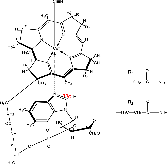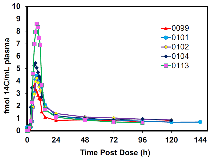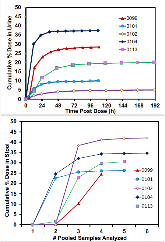Vitamin B12 added as a fortificant to flour retains high bioavailability when baked in bread
- US Dept. of Agriculture (USDA)., Davis, CA (United States). ARS Western Human Nutrition Research Center
- Lawrence Livermore National Lab. (LLNL), Livermore, CA (United States). Center for Accelerator Mass Spectrometry
- Rutgers Univ., New Brunswick, NJ (United States). School of Environmental and Biological Science
- Univ. of California, Davis, CA (United States). Dept. of Medical Pathology and Lab. Medicine
Vitamin B12 deficiency and depletion are common world-wide, particularly in populations that consume low amounts of animal source foods. WHO and the Food Fortification Initiative recommend that wheat flour be fortified with vitamin B12 in regions where intake of B12 is low. The purpose of this pilot study in five participants was to determine if fortification of flour with B12 produced a bread product with intact B12 still present and to determine if healthy elderly absorb sufficient B12 from bread fortified in this manner. High-purity crystalline 14C-B12 was dissolved in water and added to flour (2 µg B12/100 g flour) in a bread maker and made into rolls (average 1.17 kBq (31.5 nCi) 14C-B12 in a total of 0.8 µg B12 per roll). Excess 14C first appeared in plasma 4 h after ingestion of the 14C fortified bread and plasma levels returned almost to background by 72 h. Measurement of 14C in plasma verified that the dose was absorbed into the systemic circulation. The cumulative % dose recovered in urine was 4.8–37.0% (mean = 20.1%). Most of the 14C label in the stool appeared by day 4, and the cumulative % dose recovered in stool was 24.5–43.0% (mean = 31.8%). Bioavailability among the 5 participants, calculated by subtracting the sum of urinary and fecal 14C excretion from the administered dose, was 28.4–63.7% (mean = 48.0%). This study showed that when B12 is added as a fortificant to flour it survives the fermentation and baking processes, and retains ~50% bioavailability when fed in small doses to healthy subjects. The Recommended Dietary Allowance of B12 for adults is 2.4 µg/d. This recommendation assumes that usual bioavailability of low doses of the vitamin in the crystalline form is 60%, while for the same amount in foods such as meat and fish it is 50%. Lastly, our pilot study shows that B12 added to bread as a fortificant in flour was absorbed as well as it is from endogenous food sources such as meat and fish.
- Research Organization:
- Lawrence Livermore National Laboratory (LLNL), Livermore, CA (United States)
- Sponsoring Organization:
- USDOE National Nuclear Security Administration (NNSA); National Institutes of Health (NIH)
- Grant/Contract Number:
- AC52-07NA27344
- OSTI ID:
- 1488800
- Report Number(s):
- LLNL-JRNL-738621; 891866
- Journal Information:
- Nuclear Instruments and Methods in Physics Research. Section B, Beam Interactions with Materials and Atoms, Vol. 438, Issue C; ISSN 0168-583X
- Publisher:
- ElsevierCopyright Statement
- Country of Publication:
- United States
- Language:
- English
Web of Science
14C-Cobalamin Absorption from Endogenously Labeled Chicken Eggs Assessed in Humans Using Accelerator Mass Spectrometry
|
journal | September 2019 |
Similar Records
Iron bioavailability studies as assessed by intrinsic and extrinsic labeling techniques
Quantification of absorption, retention and elimination of two different oral doses of vitamin A in Zambian boys using accelerator mass spectrometry




